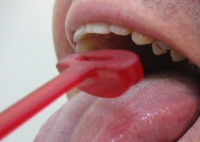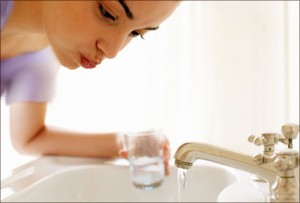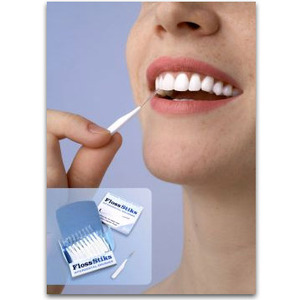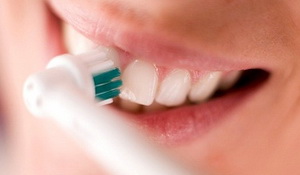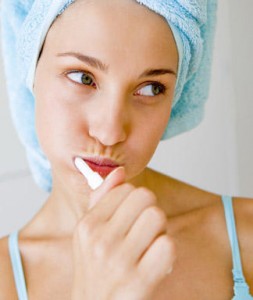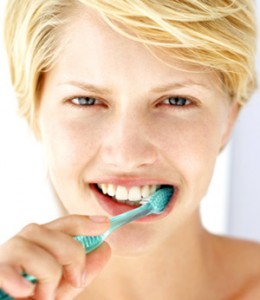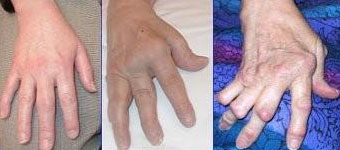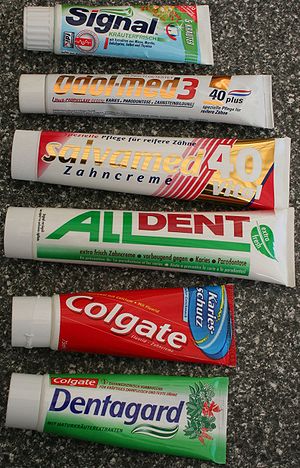Brushing your tongue may not be a common thing to do but this is one area where one should be incorporating in your oral hygiene regime. The tongue is a habitat for oral microorganisms therefore there is a potential need for tongue cleaning to be a part of our daily oral hygiene. Continue reading
Tag Archives: tooth brushing
How to Rinse to Remove Plaque
Tooth brushing is generally effective in removing food debris and plaque on our teeth. However there are certain sites and conditions inside the mouth that could not be cleaned merely by toothbrushing alone. Therefore other plaque removal methods and devices should be utilized other than toothbrushing in our oral hygiene regime, which includes rinsing. Continue reading
How Interdental Brushes Affect Teeth
Supplemental plaque removal measures beyond tooth brushing are necessary in order to thoroughly remove plaque. Although toothbrushing can be effective at removing the plaque residing on sides of teeth, it is generally ineffective for surfaces in between teeth.
There are numerous sites and conditions inside the mouth better served by plaque removal methods and devices other than toothbrushing. Examples of these sites include fixed prostheses, crown margins, in between roots of multi-rooted teeth, orthodontic appliances, the tongue, implants, and dentures. Continue reading
How to Use an Electric Toothbrush to Brush Teeth
An electric toothbrush is a toothbrush usually powered by a battery to move the brush head. Electric toothbrushes can be battery-operated or rechargeable, and can be of rotary or sonic movements. Most powered toothbrush manufacturers do not recommend a specific brushing method; however, the electric brushes should be used in a specified manner. Continue reading
Toothbrush Techniques
Many toothbrushing methods have been introduced during the last 50 years and most are identified by an individual’s name, such as Bass, Stillman, Charters, or by a term indicating a primary action to be followed, such as roll or scrub. No one method shows consistently better results in removing plaque than scrubbing. Most people brushing with an instructed professional method are not aware that they are brushing in a specific way. Therefore it may be more effective for individuals to improve their own method. Continue reading
Toothbrushing Basics
Various methods of tooth brushing have been recommended and classified to the type of motion performed by the brush. In reality it does not matter exactly how a toothbrush is used, as long as plaque is effectively removed without trauma to the gums. Where plaque still persists, the dental professional should teach effective oral hygiene. The recommended toothbrushing method will depend upon the dexterity of the individual as well as the position of the teeth. The vibratory Bass technique is the most useful and will be described in detail. Continue reading
Ways to Fight a Tooth Ache
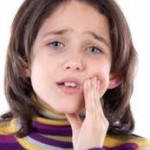
Sore Tooth
Toothache is any discomfort, swelling, reddening, irritation, possible abscess formation that occur when the pulp tissue is infected and the teeth nerves are damaged. Toothaches occur due to a myriad of causes and can be very bothersome. It may even interrupt daily function such as eating and sleeping. Follow these simple yet easy steps to ensure yourself a mouth free of toothaches. Continue reading
How does arthritis affect your oral health?
Arthritis is a complicated disease, which affects the joints of the body. There are more than a hundred different described conditions, with osteoarthritis and rheumatoid arthritis being the two most common ones. Osteoarthritis involves degeneration of the synovial cartilage and bony overgrowth on the joint articulating surfaces. Rheumatoid arthritis on the other hand has an autoimmune origin, involving self-production of auto-antibodies in the body which circulates in the blood and can attack the joints which are deemed foreign by the immune defense system. Although osteoarthritis and rheumatoid arthritis have different causes and risk factors, they are often present with similar symptoms, such as constant joint pain. Both diseases can be debilitating and adversely affect your oral health if not managed accordingly. Continue reading
What is the purpose of toothpaste
Ever tried brushing your teeth without toothpaste? You will be surprised!
Dentifrices – more commonly known as toothpaste, is a type of cleaning medium
which is meant to be used together with a toothbrush to remove soft deposits on tooth surfaces. Formation of soft deposits like dental plaque is inevitable because they are produced by non-harmful bacterial flora which occupies and lives in the mouth of a normal healthy person. In fact, dental plaque provides a suitable habitat for bacteria to multiply and produce acidic by-products which is harmful to our teeth/gums. Hence, the main objective of brushing teeth is to remove such potential harmful cause and
maintain the hygiene of the oral cavity. Continue reading
Oral Health Pt 2: Effects of toothbrushing, dietary sugars and acids
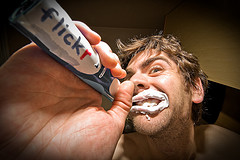
Toothbrushing improves oral health
What affects oral health?
The obvious answer would be oral hygiene care. Importance of tooth brushing cannot be stressed enough and the quality, rather than the quantity matters more. While most people brush two, some even three times a day, the truth is that it does not necessarily prevent you from dental problems such as dental decay or gingivitis especially if you are not brushing appropriately. Having a good tooth brushing technique is crucial to good oral health as being able to remove plaque effectively is directly related to the state of your mouth. In fact, some people with very good tooth brushing technique and reasonable sugar intake are actually able to get away with just brushing once a day without developing any dental problems. The only reason that dentists are advocating their patients to brush twice a day being most people of the population will fail to remove plaque adequately and requires that extra kick to help maintain oral health at good levels. Continue reading
